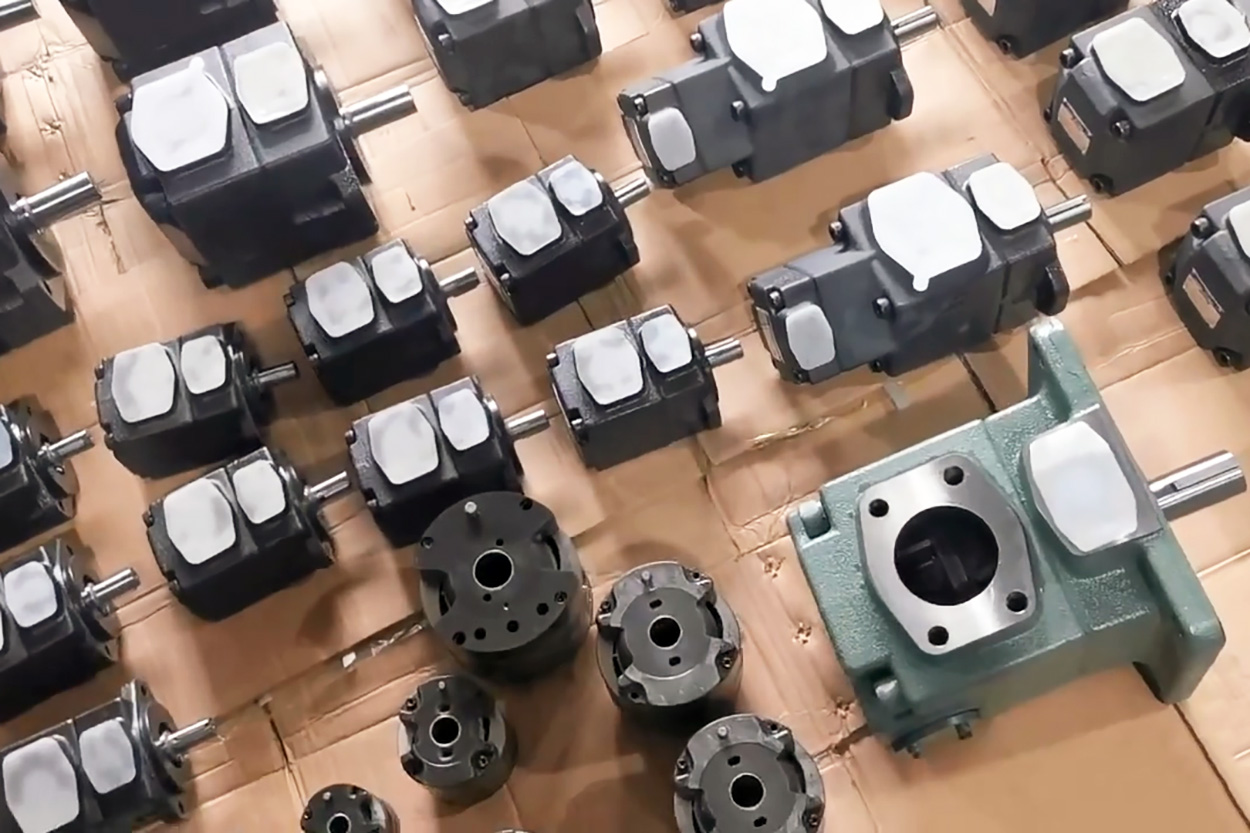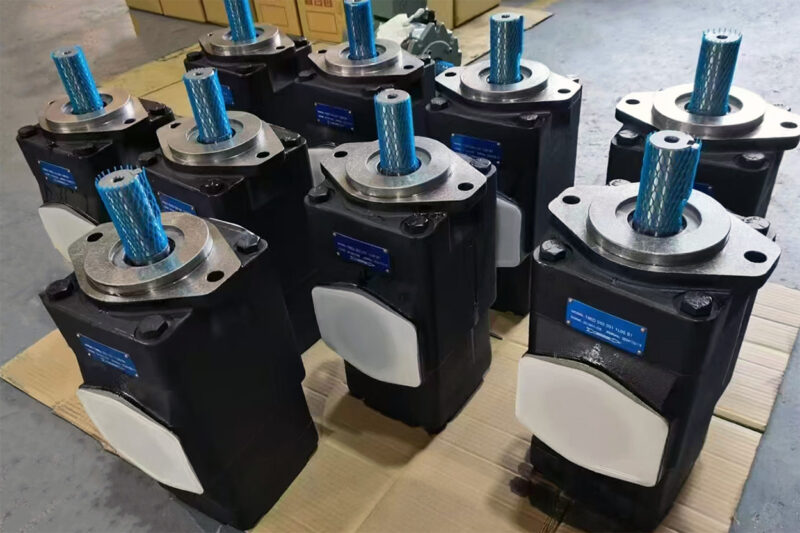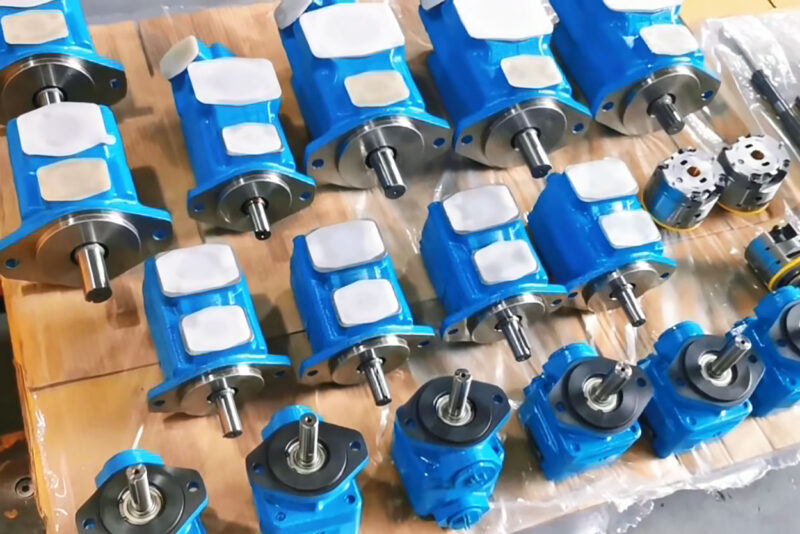- The vane pump has no oil discharge or insufficient flow
– Wrong direction of rotation: The motor goes to the wrong rotation and the pump is never able to suck and discharge oil normally. The motor rotation direction should be stopped immediately and corrected.
– Broken or non-rotating pump shaft: Absent is the motor power supply, a coupling, or a key is damaged, or the pump shaft is broken, preventing the rotor from turning. The power supply, coupling and key have to be examined while the damaged pump shaft be repaired or replaced.
– Blockage in suction line: The suction pipeline, suction oil filter, or oil tank filter is blocked because oil cannot go into the pump. The suction line requires inspection and cleaning, and the oil tank filter in case of limited flow needs to be replaced.
– Oil problem: The viscosity of the oil is too high, resulting in large sliding resistance for the blades and making it difficult for them to slide out of the rotor slots; if the viscosity is too low, then leakage increases, thus affecting the flow. Oil with the specified viscosity needs to be used.
– Speed problem: If the speed is too low, the centrifugal force is not enough to throw the blades out normally, affecting the sealing of the discharge chamber.
– Pump cover problem: Poor tightening of the pump cover will cause leakage and affect the flow rate. The pump needs to be reassembled with a torque wrench.

- The pressure of the vane pump cannot rise to the standard level
– Oil pump problem: The oil pump does not oil or the flow rate is insufficient, and the pump cover screws loosen due to long-term vibration of the oil pump, which will cause the pressure to fail to rise. The oil pump failure needs to be eliminated and the screws tightened appropriately.
– Overflow valve failure: The overflow valve adjusts the pressure too low or fails, so that the system pressure cannot be increased. The overflow valve pressure should be re-adjusted or the overflow valve should be repaired.
– System leakage: There is a leak in the system, which will cause the pressure oil to leak back to the oil tank, resulting in the pressure not rising. The system needs to be checked and the leak point needs to be repaired.
– Oil intake problem: A leak in the intake pipe or insufficient oil intake will cause air to be sucked in by the pump thus making pressure establishment more difficult. You need to check every fitting, seal and tighten it all to ensure adequate oil intake.
– Incorrect adjustment of variable pump: Pressure is incorrectly adjusted for the variable pump and needs to be adjusted to the required pressure.
- The noise of the vane pump is higher than the normal range
– Suction problem: Pump will suck air or will endlessly gall-up oil due to smaller suction pipe, blocked oil suction filter, insufficient flow rate at tank side filter, air being sucked by suction pipe, bubbles in the oil tank, oil tank filter being above the oil surface, etc. Appropriate measures must be taken in solving such a problem related to oil suction.
– Pump shaft problem: Air is sucked in the pump shaft oil seal, the coupling makes noise, the pump bearing is damaged, the cam ring is worn, the pump is severely worn, etc., which will also cause noise. It is necessary to check whether the axis is concentric and replace the damaged parts.
– Other problems: The oil tank air filter is blocked or the specification is too small, the rotation speed is too high, the set pressure is too high, the pump cover is not tightened properly, etc., which may also cause noise, and corresponding inspections and adjustments are required.
- The oil temperature in the vane pump is too high
– Pressure and speed: Too high pressure and too fast speed will increase the power loss of the pump and cause the oil temperature to rise. The pressure valve needs to be adjusted to reduce the speed.
– Oil viscosity: If the oil viscosity is too high, it will increase the flow resistance and increase the oil temperature. You should choose an oil with appropriate viscosity.
– Heat dissipation problem: If the oil tank has poor heat dissipation conditions and the oil tank volume is too small, the oil will not dissipate heat well and the oil temperature will increase. You can increase the oil tank volume or add a cooling device.
– Friction problem: If the oil distribution plate and the rotor rub severely, and the blades and the inner surface of the stator are severely worn, a lot of heat will be generated, which will increase the oil temperature. The worn parts need to be repaired or replaced.

